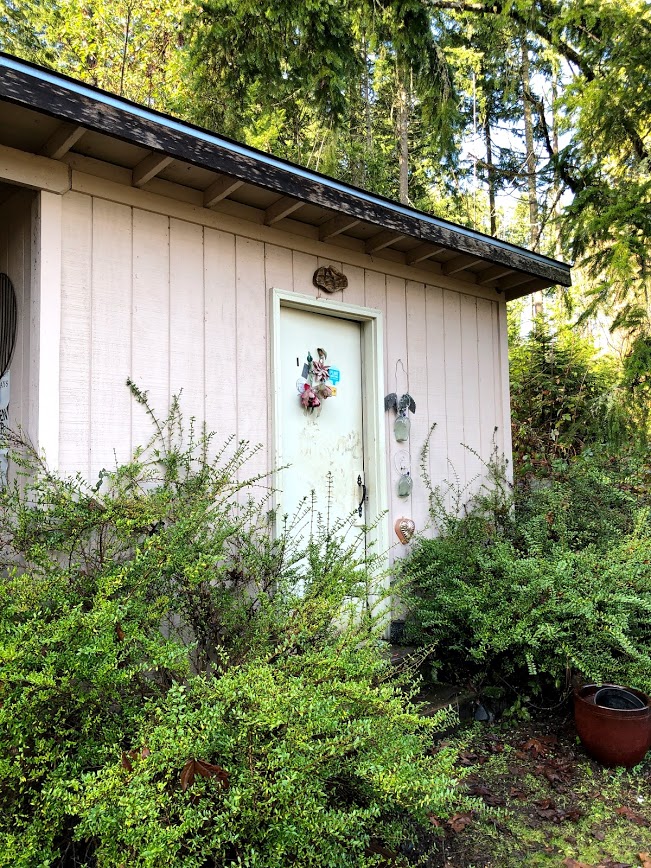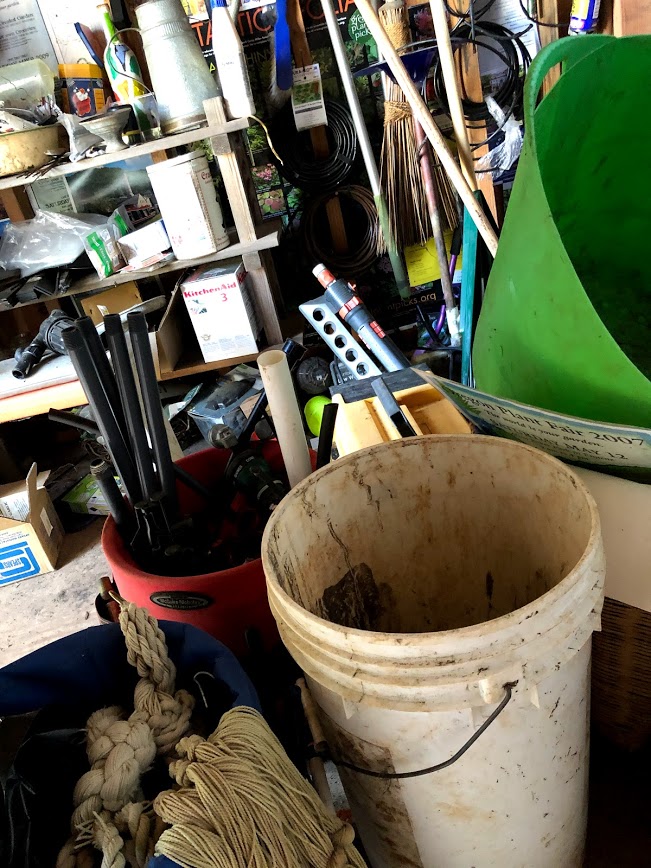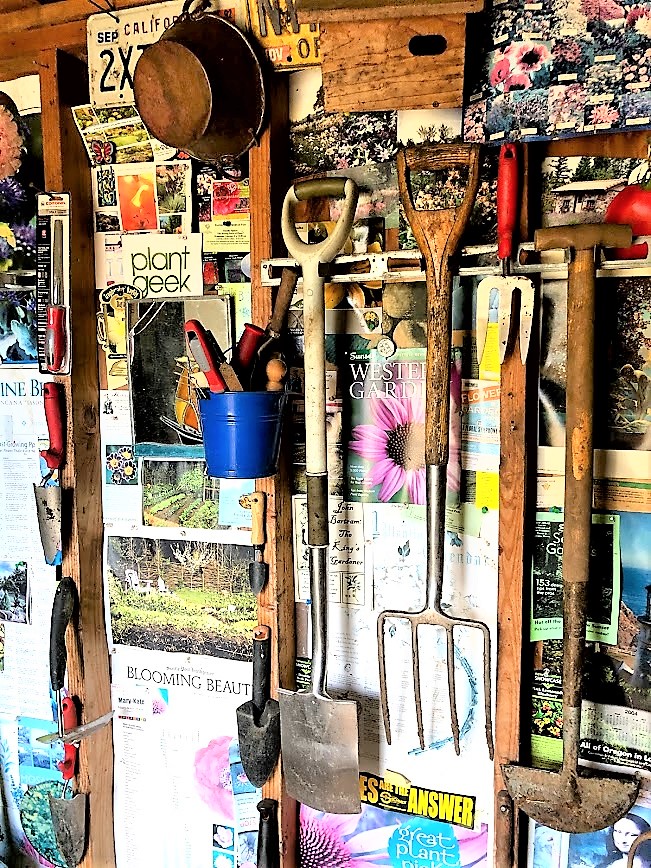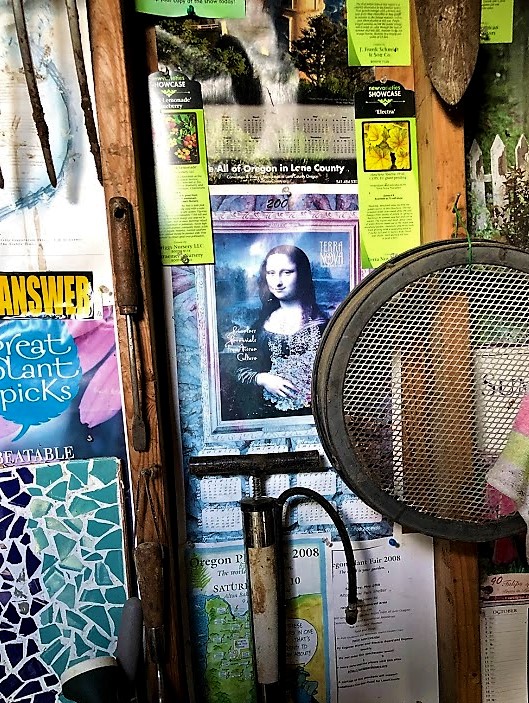
In times of chaos, gaining control over even one tiny part of your life can be a positive experience. And organizing your garden shed or greenhouse is a great place to start. Organization is about efficiency. Can you find it when you need it? There’s a lot of advice out there, but here are some simple steps that worked for me. And the results have brought me absurdly huge satisfaction.
A Brief History of Creating Chaos. My garden shed was a utilitarian storage space—nothing fancy. Over many gardening seasons, I’d always just shoved tools into any available spot. And as the shed filled up with more stuff, the idea of organizing it became daunting. So, I didn’t.

Chunk It. Finally, I realized I was wasting so much time searching for tools, I had to take on the chaos. As a writer, when I’m faced with a massive manuscript, I break it down into small doable tasks. It’s often called chunking. For my shed, I decided to chunk my time, doing the sorting in fifteen minutes intervals. Every day I worked in the shed, I set a timer. When it rang, I stopped—even if I wanted to do more. I’ve learned I must always keep my time promise to myself. Otherwise, I won’t want to continue.
Go Slow. Then Go Slower. The trick here is to figure out how much time you can actually devote to a task you might not want to be doing. You have to make it small. And if you can’t keep that up, make it smaller, until it’s so easy you can actually meet your goal—even if that’s only five-minute sessions. If you keep going, you will eventually get done.

Sort by Use. Big and small items can be gathered in one place if you group them together by use instead of size. How to store them will come later. To start, I designated one small spot in the mess where I piled all the things that cut—loppers, clippers, rice sickles, and small saws. That actually took several sessions. Then I categorized piles of tools for weeding, followed by digging and watering. All this time I was using some of these tools, but always putting them back in the piles I had created. It wasn’t pretty.
Weed the Excess. For some of you, creating those use piles may be enough. If you can locate what you need, that’s organized. But I wanted the next step—get rid of the duplicates in each category. Now that was easy. I knew which tools I always turned to. The rest went in the giveaway bucket. And just in case you need it, I hereby give you permission to give away gifts from beloved people, expensive objects, and things you might need in the vague future but are not in use now.
Take Care with Chemicals. The last job I tackled was a groaning upper shelf of sprays, pesticides, and herbicides, bought or given to me over the years. Anything I hadn’t used in the last year was placed (still in their original containers) into lidded buckets that I taped shut and marked as chemicals. My county has a twice-yearly roundup of what shouldn’t go in the landfill and those buckets went to the roundup. It may cost a bit of money to dispose of this stuff safely, but as gardeners, we carry the responsibility for our actions that can affect the natural world.

Decide on Storage Solutions. This is the fun part. With everything divided by use, it becomes easier to see how you need to store them. I chose hangers for the spades and rakes, nails for the trowels, and five-gallon buckets to hold the watering wands and nozzles. The goal for me was to be able to look around the shed and locate exactly what I needed. The bonus—I always notice which tool is missing.
Add Fun. After all this heavy-duty organizing, consider adding something that pleases you in your working space —a piece of artwork, a basket collection, or some antique tools. As a garden writer, I receive advertising from various horticultural companies and the photographs are often things of beauty. So, I’ve tacked them up on the plywood walls of my shed, and now I’m even papering the ceiling.
Yes, working this way takes patience and time. And by going slowly, your space may be messy for quite a while. But in uncertain times, you can find enjoyment in making one small area in your life function better. What will you organize?










